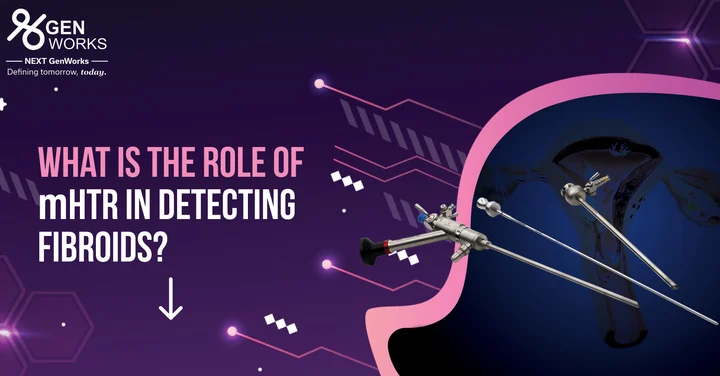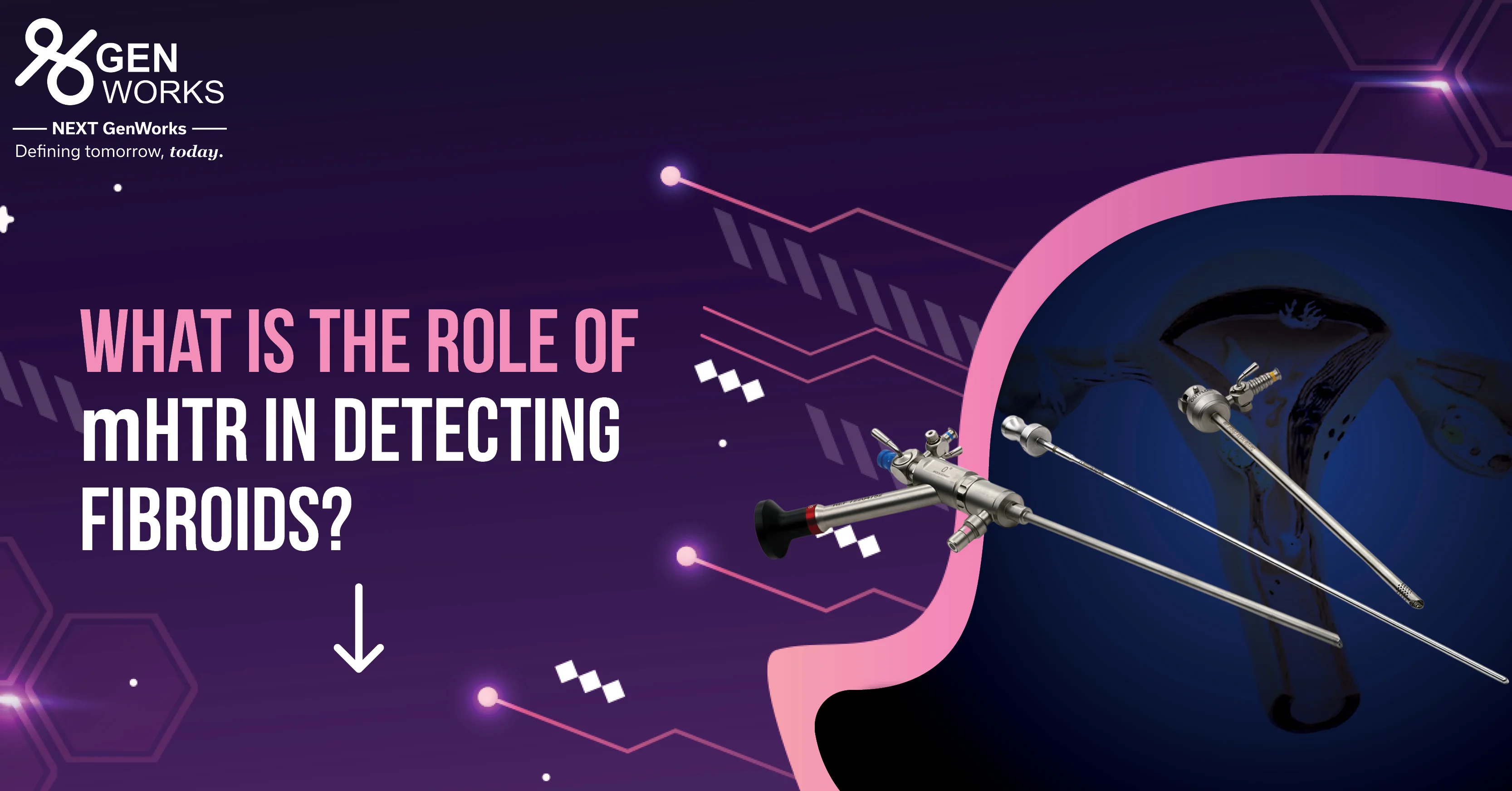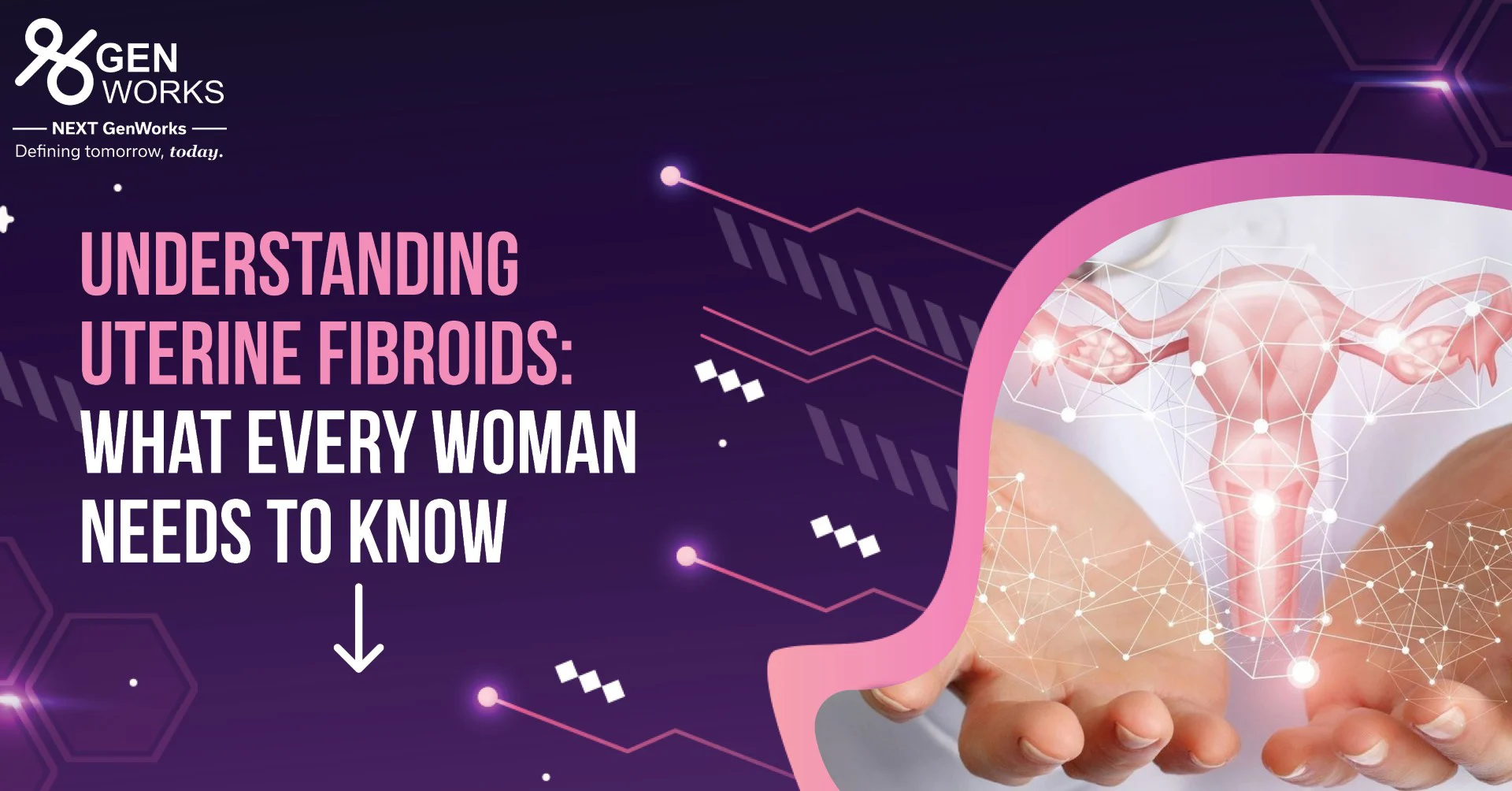What is the Role of mHTR in Detecting and Treating Fibroids?

Uterine fibroids are non-cancerous growths of the uterus that frequently appear during childbearing years. While many fibroids are asymptomatic, they can sometimes cause symptoms such as heavy menstrual bleeding, pelvic pain, and reproductive issues.
According to FOGSI, the prevalence of fibroids is reported to be 37.65% in rural populations and 24% in urban populations in India. Fibroids can occur as a single growth or multiple growths and can develop in different parts of the uterus.
The detection and treatment of fibroids have significantly evolved over the years, and one of the most promising advancements in this field is the use of minimally invasive hysteroscopic techniques, particularly the Mechanical Hysteroscopic Tissue Removal (mHTR) system.
What is mHTR?
Mechanical Hysteroscopic Tissue Removal (mHTR) is a minimally invasive procedure designed to both diagnose and treat uterine fibroids. This technique involves the use of a hysteroscope, a thin, lighted tube that is inserted into the uterus through the vagina and cervix.
The hysteroscope allows for direct visualization of the uterine cavity, enabling precise detection of fibroids. mHTR systems are equipped with specialized instruments that can simultaneously remove the fibroids while providing real-time imaging. This dual functionality significantly enhances the accuracy and efficiency of the procedure, reducing the need for multiple interventions.
Detecting Fibroids
The detection of fibroids using mHTR is highly effective due to the following reasons:
-
Direct Visualization: The hysteroscope provides a clear and magnified view of the uterine cavity, allowing for the identification of fibroids.
-
Precision: The ability to directly visualise the fibroids ensures that the diagnosis is accurate, reducing the likelihood of misdiagnosis or overlooking smaller fibroids that could cause symptoms or complications.
-
Real-Time Assessment: mHTR allows for an immediate evaluation of the uterine cavity, enabling the physician to assess the size, location, and number of fibroids in real time. This immediate feedback is crucial for planning the most effective treatment strategy.
Treatment of Fibroids
When it comes to the treatment of fibroids, mHTR offers several advantages over traditional surgical methods:
-
Minimally Invasive: Unlike traditional open surgeries, mHTR is a minimally invasive procedure. This means smaller incisions, reduced blood loss, and less postoperative pain. Patients typically experience quicker recovery times and shorter hospital stays.
-
Targeted Removal: The precision of mHTR allows for targeted removal of fibroids while preserving the surrounding healthy tissue. This is particularly important for women who wish to maintain their fertility.
-
Reduced Complications: The minimally invasive nature of mHTR reduces the risk of complications such as infection, excessive bleeding, and scarring, which are more common in traditional surgical approaches.
-
Efficiency: The combination of detection and treatment in a single procedure streamlines the process, reducing the overall time and cost associated with managing fibroids.
The Role of Hysteroscopy
One of the most advanced systems in the realm of mHTR is the Hysteroscopy system. The system is designed to enhance the efficiency and effectiveness of fibroid detection and removal. Here are some key features that make hysteroscopy an invaluable tool in treating fibroids:
-
Integrated Visualization and Removal: The system integrates high-definition visualisation with precise tissue removal capabilities. This integration allows for a seamless transition between diagnosing and treating fibroids, enhancing the overall efficiency of the procedure.
-
Optimized Safety and Comfort: The system is designed with patient safety and comfort in mind. The minimally invasive nature of the procedure, coupled with the advanced technology of the hysteroscopy system, minimises discomfort and reduces the risk of complications.
-
Versatility: Hysteroscopy is versatile and can be used to treat a variety of intrauterine pathologies in addition to fibroids, such as polyps and retained products of conception. This versatility makes it a valuable tool in the arsenal of gynecologic surgeons.
-
Improved Outcomes: The use of the system is associated with high success rates and low recurrence rates of fibroids. The precise removal of fibroids, coupled with the minimal invasiveness of the procedure, leads to improved patient outcomes and satisfaction.
Summing It Up
The role of Mechanical Hysteroscopic Tissue Removal (mHTR) in detecting and treating fibroids represents a significant advancement in the field of gynaecology. The ability to combine diagnosis and treatment in a single, minimally invasive procedure offers numerous benefits to patients, including reduced recovery times, minimal complications, and improved outcomes.
As the field of minimally invasive gynaecology continues to evolve, the integration of advanced technologies like mHTR and the TruClear system will undoubtedly play a crucial role in improving the detection and treatment of fibroids, ultimately enhancing the quality of life for countless women.



